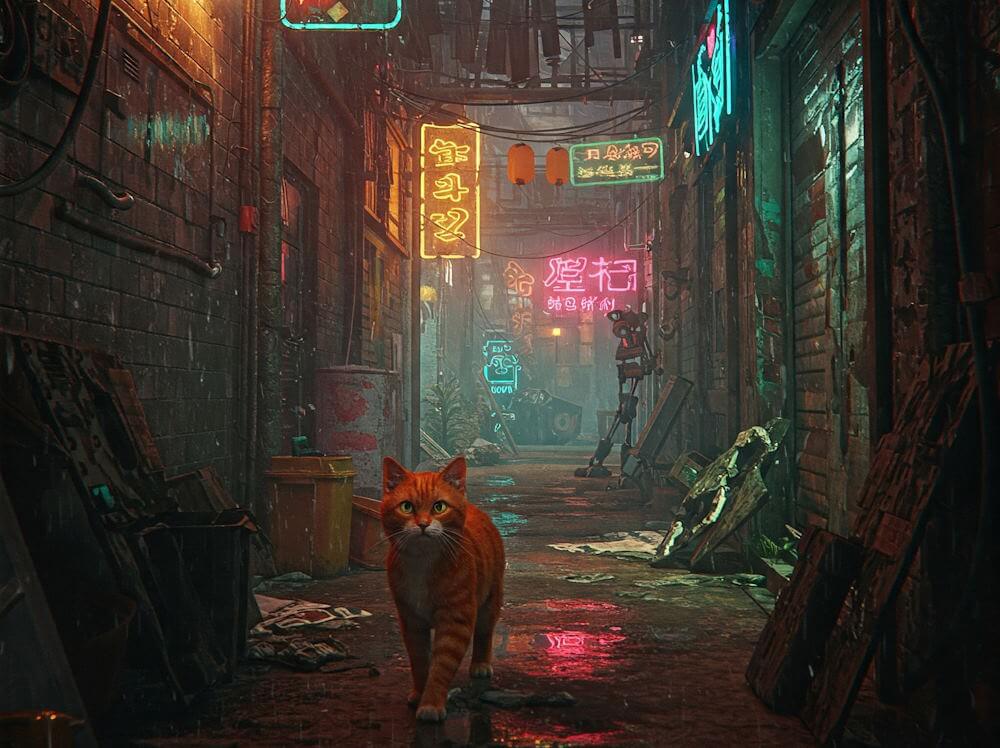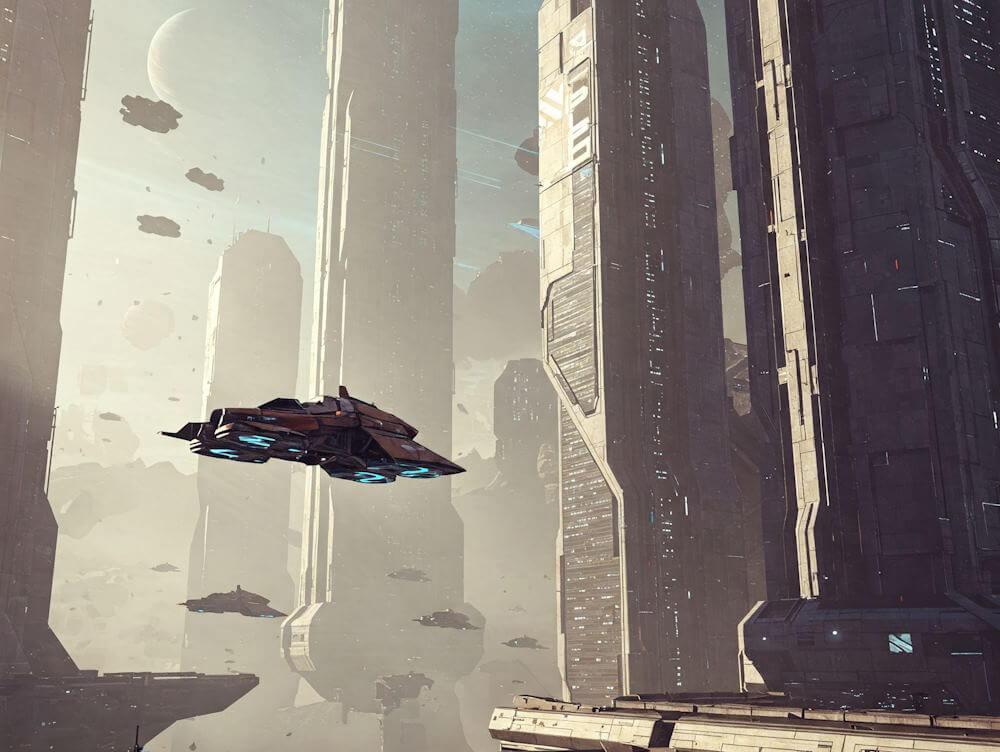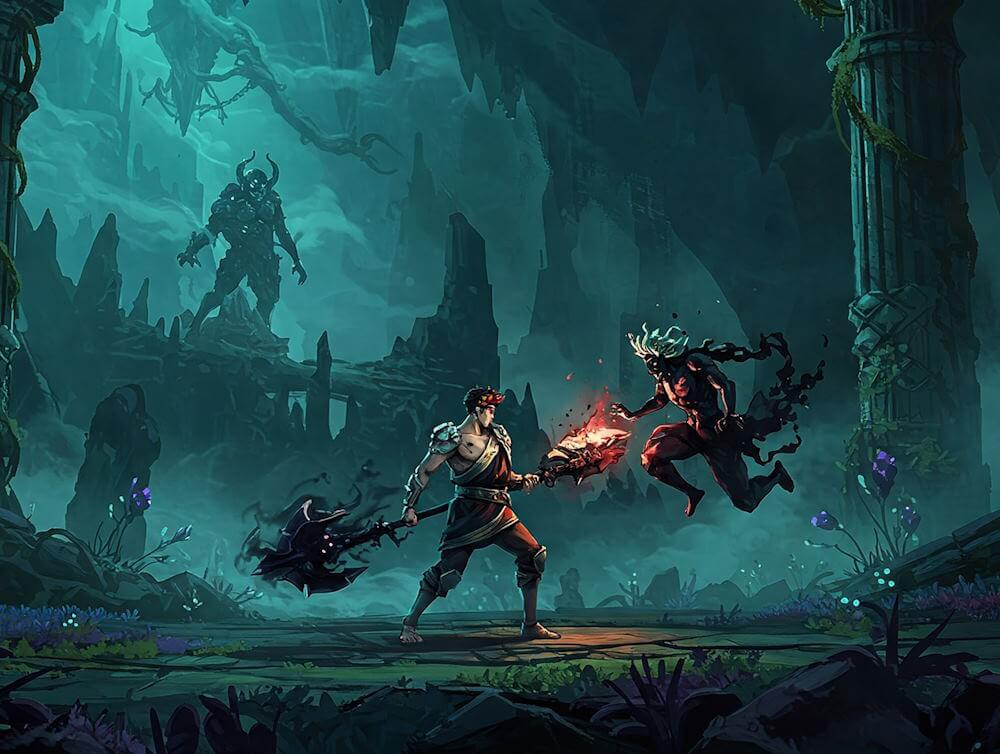Stray is an innovative indie game that has captured the attention of both gamers and critics alike. Developed by BlueTwelve Studio and published by Annapurna Interactive, Stray presents a unique premise that revolves around an unassuming yet adventurous stray cat navigating a dystopian city abandoned by humanity. This engaging narrative is complemented by a rich atmospheric setting, with every corner of the city teeming with attention to detail, which elevates the player’s experience. Initially announced in 2020, the game sparked considerable interest, leading to heightened expectations surrounding its launch.
The gameplay mechanics of Stray are designed to immerse players in the life of a feline protagonist. Players explore the intricacies of the city from a cat’s perspective, employing agility and intelligence to traverse obstacles, solve puzzles, and interact with various objects and NPCs. The game cleverly utilizes a combination of platforming elements and stealth mechanics, encouraging players to make use of the cat’s natural abilities—such as sprinting, jumping, and meowing—to navigate through the visually stunning environment. This dynamic interaction not only enriches the gameplay but also immerses players in the narrative journey of a lost cat striving to reunite with its family.
Prior to its launch, Stray was heralded as a potential standout in the indie genre for its creative concept and distinctive storytelling. The ability to embody a stray cat in a post-human world offered a fresh perspective that deviated from mainstream gaming tropes. Expectations were further fueled by the promise of a rich narrative, beautifully designed visuals, and a captivating soundtrack, all of which combined to pique the interest of gamers eager for an unconventional gaming experience. As we delve deeper into Stray, it is essential to examine how its development complexity and gameplay elements align with the initial anticipation surrounding its release.
Narrative and World-Building
Stray presents a distinctly engaging narrative that unfolds organically through exploration, world interaction, and puzzle-solving mechanics. Players assume the role of a stray cat navigating a richly designed cyberpunk city, filled with neon lights and intricate architecture. This setting not only enhances the visual experience but also serves as a crucial component in storytelling. The narrative is cleverly woven into the fabric of the environment, encouraging players to discover the story through observation and engagement with non-playable characters (NPCs) and various objects.
The themes of companionship and loneliness resonate profoundly throughout the game. As the story progresses, players encounter other characters, both human and feline, each contributing to the protagonist’s journey. The interactions broaden the narrative, allowing for moments of connection, empathy, and exploration of the emotional landscape within this urban maze. Through these relationships, Stray masterfully highlights how companionship can emerge in the most unexpected places, contrasting the pervasive sense of isolation vividly portrayed in the game world.
World-building in Stray is characterized by its intricate design and meticulous attention to detail. The vibrant yet melancholic atmosphere reflects the struggles of its inhabitants, encouraging players to immerse themselves fully in their surroundings. The game thrives on the tension between the playful antics of the cat and the shadows of the desolate environment, creating a captivating juxtaposition. Each area, from the bustling streets to the hidden alcoves, tells its own micro-narrative, further enriching the overall experience.
As players progress, puzzles reveal not just mechanical challenges, but also deeper insights into the lore of this dystopian setting. By integrating narrative elements with engaging gameplay, Stray manages to evoke an emotional response while immersing players in a beautifully crafted world where stories await discovery in every corner.
Gameplay Mechanics and Features
Stray, the commendable indie game that follows a lost cat in a futuristic city, sets itself apart through innovative gameplay mechanics that uniquely integrate the characteristics and abilities of a feline protagonist. The mechanics of navigation in Stray showcase the cat’s agility and coherence with its environment, enabling fluid movement and exploration. Players can easily hop, climb, and squeeze through tight spaces, creating an immersive experience that reflects the natural behaviors of a cat. This navigation system elevates the gameplay, placing players in the perspective of their agile hero.
One of the standout features of Stray is its parkour-like mechanics. The game encourages players to adopt a strategic mindset, as they navigate a vast urban landscape filled with obstacles. The simplicity of controlling the cat’s leaps and bounds allows for a learning curve that feels satisfying. Players have the freedom to explore rooftops and alleyways that might otherwise remain hidden in a traditional gaming format. This seamless blend of creativity and responsibility in traversing environments fosters a sense of ownership over the journey.
Puzzle-solving elements in Stray are incorporated seamlessly into the gameplay, requiring players to think critically and use their environment effectively. Various puzzles revolve around interacting with objects, using the hero’s innate cat abilities to progress. This mechanic fosters engagement, encouraging players to observe their surroundings for solutions rather than relying solely on visible cues. The interactions with characters and the environment are crafted to amplify the feeling of a living, breathing world, enriching the overall narrative experience.
The innovative integration of catlike abilities serves not only as a gameplay element but also enhances the wider storytelling within Stray. It allows players to deeply connect with the character, making every pounce and paw tap feel meaningful. Thus, the gameplay mechanics and features position Stray as a landmark title in the indie game landscape, setting a high bar for both engagement and creativity in game design.
Visual and Audio Design
The visual and audio design of Stray plays a crucial role in establishing its immersive gameplay experience. From the moment players enter the vibrant, neon-drenched world, they are greeted with a distinctive artistic style that merges realism with a charming, cartoon-like aesthetic. This approach not only enhances the unique setting of the game but also defines the overall atmosphere, making it an engaging space for exploration.
One of the standout elements of Stray’s graphics is its attention to detail. The intricately designed environments reflect a post-apocalyptic future, where the remnants of human civilization intertwine with nature. The use of color is particularly noteworthy; warm hues contrast with cooler tones, creating a dynamic visual landscape that captivates players. This design choice not only serves an aesthetic purpose but also guides gamers through the gameplay, subtly directing them toward points of interest and encouraging exploration.
Equally remarkable is the audio design, which complements the visuals in creating an immersive atmosphere. The game’s soundscape features a mix of ambient sounds, from the soft hum of city life to the subtle rustling of leaves, that helps to envelop players in the environment. The positional audio plays a significant role in gameplay, allowing players to hear distant sounds that hint at nearby activities or dangers, fostering a sense of presence and urgency.
The combination of vibrant visuals and rich audio elements collectively enhances the narrative experience in Stray, placing players directly into the paws of their feline protagonist. This synergy not only enriches gameplay but also reinforces Stray’s identity as a purrfect indie game, engaging the player in a truly immersive world. The interplay of these design elements highlights the game’s commitment to providing a captivating and meaningful experience.
Community Reception and Critiques
Upon its release, Stray garnered significant attention from both players and critics, becoming a topic of lively discussion within the gaming community. The game’s unique premise, where players assume the role of a stray cat navigating a futuristic neon-lit world, resonated deeply with audiences. Reviews from major gaming publications praised the game’s captivating art style and immersive atmosphere, highlighting how they contributed to a refreshing narrative experience.
One of the most acclaimed aspects of Stray is its emotional storytelling, which deftly explores themes of loneliness and companionship. Players expressed their appreciation for the game’s ability to evoke strong feelings, making the journey through its dystopian setting not only engaging but relatable on a personal level. Many reviews highlighted the clever level design and the innovative gameplay mechanics derived from the cat’s unique abilities, which made exploration both fun and rewarding.
However, not all feedback was overwhelmingly positive. Critiques emerged regarding some gameplay elements that players found repetitive over time. A portion of the gaming community voiced disappointment over the lack of combat mechanics, feeling that it detracted from their experience in high-stake situations. Additionally, several players reported technical issues during the launch period, including frame rate drops and bugs that hindered their gameplay. These concerns received attention from the developers, who have since committed to resolving these issues through updates.
In summarizing community feedback, it becomes evident that while Stray was lauded for its innovation and emotional depth, it also faced challenges that prompted discussions on game design and player expectations. This dual response reflects the diverse tastes within the gaming community, making Stray a noteworthy case study in indie game development. Overall, the game has made a significant impact, effectively balancing its praise and critiques in shaping players’ perceptions.
Comparisons with Other Indie Titles
The indie gaming landscape is both vibrant and diverse, showcasing a multitude of titles that often push the boundaries of creativity and innovation. Stray, developed by BlueTwelve Studio, has certainly carved out a unique niche within this space, primarily due to its compelling narrative and distinct gameplay mechanics. When comparing Stray to other notable indie games, such as Celeste and Hollow Knight, we can gain a better understanding of its strengths and positioning.
Stray’s narrative-driven approach sets it apart in a genre that often emphasizes gameplay mechanics over story. Much like Journey—a game known for its visual storytelling—Stray immerses players in an emotional journey, although its storytelling is enhanced by the perspective of a cat navigating a dystopian world. This originality in perspective is somewhat akin to what the developers of Firewatch achieved, successfully intertwining exploration with profound character development. Unlike Celeste, which primarily focuses on platforming challenges intertwined with a tale of personal growth, Stray’s narrative unfolds through environmental storytelling, enriching the player’s experience with a sense of discovery.
Regarding gameplay mechanics, Stray offers an innovative blend of exploration, puzzle-solving, and stealth elements that resonate with aspects found in games like Limbo and Inside. The freedom to traverse an intricate urban environment adds a layer of exploration that rivals the atmospheric depth captured in both titles. While Hollow Knight presents players with intricate combat and a sprawling world to explore, Stray leans more into exploration and interaction with its environment, highlighting the unique abilities of the feline protagonist.
Overall, Stray does well in carving its own identity within the indie domain. While it shares traits with other influential titles, its unique perspective, blended storytelling, and creative gameplay mechanics position it as a noteworthy contender in the indie scene, appealing to fans of narrative-focused games and animal-centric simulations alike.
Technical Performance and Updates
Upon its launch, Stray garnered significant attention from gamers and critics alike, highlighting not only its engaging narrative but also its technical performance across platforms. However, like many indie games released under tight deadlines, Stray experienced a few technical hiccups that players encountered in the early stages. Some players reported frame rate drops and occasional bugs that affected gameplay. These issues were particularly noted in the initial days following the game’s release, sparking concern amongst the player community regarding the game’s overall optimization.
The developers, recognizing these concerns, actively engaged with the community to address reported issues. Post-launch, a series of patches were rolled out aimed at improving the game’s performance. These updates focused on optimizing graphics rendering and fixing critical bugs that disrupted gameplay. The developers also implemented performance enhancements specifically designed for different console platforms, ensuring that the gaming experience remained consistent whether played on PlayStation or PC. Such dedication to addressing player feedback resulted in an improved experience for many who might have otherwise been deterred by the initial performance issues.
Moreover, the developers committed to ongoing support for the Stray community, indicating that they would prioritize player feedback in shaping future updates. This commitment was demonstrated through a detailed roadmap shared with the player base, outlining forthcoming patches and enhancements. The transparent communication helped reinforce confidence in the game’s continuity and the team’s responsiveness to emerging issues. Players have since reported a marked improvement in technical performance, showcasing the developers’ dedication to refining Stray into a polished indie experience. As the game continues to evolve, the community’s support and feedback will play a crucial role in its ongoing success.
Future of Stray and Potential Sequels
The indie game Stray has made a significant impact within the gaming community, combining captivating storytelling with unique gameplay mechanics centered around a feline protagonist. Given the game’s success, discussions regarding potential sequels or expansions are becoming increasingly prevalent among fans and developers alike. The positive reception of Stray suggests that there may be ample opportunities for its creators to build on the original concept and explore new narrative directions.
One possible avenue for future development lies in the expansion of the game’s rich, post-apocalyptic world. Players have expressed interest in deeper exploration of the environments, which could lead to additional gameplay mechanics and story arcs. Developers might consider integrating new settings, such as neighboring districts or entirely different locations, to expand the game’s universe. Each new area could introduce fresh challenges, characters, and plotlines, offering an enriched experience for players.
Additionally, the possibility of sequels raises the question of how the core mechanics could evolve. The relationship between the protagonist cat and the companion drone, B12, was central to the gameplay in Stray. Future iterations might explore the evolution of this dynamic or introduce new companions, each with unique abilities and roles in gameplay. These enhancements could create even more immersive puzzles and increase player engagement.
Furthermore, community interest should not be overlooked. The developers may tap into fan feedback to identify which elements resonated most strongly, allowing them to tailor future content accordingly. This approach not only fosters a sense of community involvement but also ensures that sequels or expansions align with player expectations.
Ultimately, the future of Stray appears bright. With its strong foundation and the potential for further exploration, both in terms of narrative and gameplay mechanics, potential sequels could very well capture the hearts of fans once again.
Final Thoughts
The post-launch period of Stray has highlighted its resounding success and unique standing within the indie gaming landscape. As players navigate the atmospheric, cat-centric world, they are met with an engaging narrative and stunning visuals that have collectively left a significant mark on the gaming community. Stray has not only captured the hearts of gamers but has also garnered attention from critics, receiving accolades that reinforce its status as a high-quality title. The intriguing gameplay mechanics, combined with the emotional depth of its story, promote an appreciation for the simpler joys of life as experienced through the lens of a feline protagonist.
One of the standout features of Stray is its ability to provide an immersive experience that showcases the beauty of exploring a richly crafted environment. The game invites players to engage with their surroundings in a way that is both intuitive and captivating. The emphasis on exploration and interaction has established Stray as a benchmark for how indie games can effectively transport players into different realities. This, paired with its strong narrative and character development, enhances its reputation as ‘the purrfect indie game.’ The depth and creativity displayed in Stray illustrate the potential for indie titles to challenge mainstream games in delivering compelling experiences.
Furthermore, the significant impact of Stray on the indie gaming sphere cannot be overstated. It has inspired a renewed interest in narrative-driven gameplay and has demonstrated the potential for indie developers to create memorable, emotionally resonant products. The achievements of Stray in bringing a unique perspective and style to the gaming audience serve as an important reminder of the creativity that thrives within the indie scene. Overall, Stray stands as a testament to the power of independent game development, and its legacy is likely to influence future titles in the genre.



